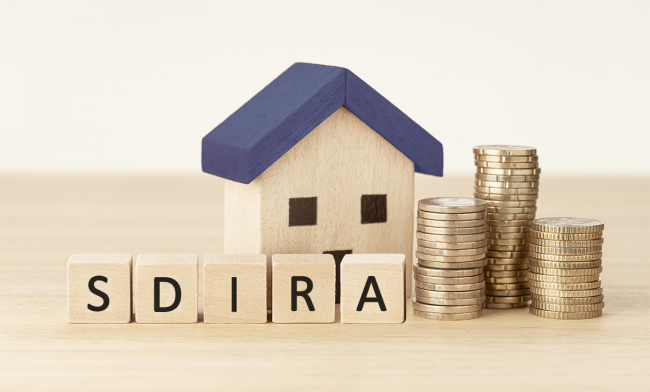While financial benefits of a 1031 Exchange are experienced within the 180-day exchange period, there are additional, compounding benefits that are not readily visible at the completion of your exchange.
Let’s take a look at the long-term benefits of utilizing a 1031 Exchange for your qualifying real estate transaction.
Suzy Investor owns a retail center she has been renting out over the past 20 years. She has taken annual depreciation deductions of $10,256 since 1990, reducing her tax basis to $244,880. She decides to sell the retail center at market value of $1,250,000, and rid herself of management responsibility by reinvesting into a passive investment opportunity, such as a DST.
Without leveraging a 1031 Exchange, Suzy will incur the following tax liability, leaving her only $942,400 to reinvest.
federal capital gains tax (20%): $153,000
depreciation recapture tax (25%): $51,280
state capital gains (5% varies by state): $38,250
net investment income tax (3.8%): $29,070
Total Tax Liability: $271,600
Reinvestment Total Without a 1031 exchange: $942,400 ($1,250,000 – $271,600)
However, should Suzy engage a Qualified Intermediary prior to the sale of her retail center and structure her transaction as a 1031 Exchange, she will defer all levels of tax above and have the total $1.25 Million to reinvest.
The immediate benefit is obvious; Suzy has an additional $271,600 to reinvest. The less obvious benefit is how that additional amount compounds over the proceeding years. With Suzy utilizing a 1031 Exchange and reinvesting the full $1.25 million, at a 7% compounded rate of return over the next 10 years she will have earned nearly double the investment for a total of $2.45 Million.
Without a 1031 Exchange, the reinvestment amount of just $942,400 after 10 years at the same compounding rate of return, only earns $1.85 Million, roughly only $500,000 more than her original reinvestment amount with the use of a 1031 Exchange. That equates to $600,000 less over 10 years should a 1031 Exchange not be utilized.
Utilizing a 1031 Exchange not only provides investors with immediate benefits, it continues to produce returns on investment in the future.
The material in this blog is presented for informational purposes only. The information presented is not investment, legal, tax or compliance advice. Accruit performs the duties of a Qualified Intermediary, and as such does not offer or sell investments or provide investment, legal, or tax advice.
Category: 1031 Exchange General
-

The Compounding Benefits of a 1031 Exchange
-

The Compounding Benefits of a 1031 Exchange
While financial benefits of a 1031 Exchange are experienced within the 180-day exchange period, there are additional, compounding benefits that are not readily visible at the completion of your exchange.
Let’s take a look at the long-term benefits of utilizing a 1031 Exchange for your qualifying real estate transaction.
Suzy Investor owns a retail center she has been renting out over the past 20 years. She has taken annual depreciation deductions of $10,256 since 1990, reducing her tax basis to $244,880. She decides to sell the retail center at market value of $1,250,000, and rid herself of management responsibility by reinvesting into a passive investment opportunity, such as a DST.
Without leveraging a 1031 Exchange, Suzy will incur the following tax liability, leaving her only $942,400 to reinvest.
federal capital gains tax (20%): $153,000
depreciation recapture tax (25%): $51,280
state capital gains (5% varies by state): $38,250
net investment income tax (3.8%): $29,070
Total Tax Liability: $271,600
Reinvestment Total Without a 1031 exchange: $942,400 ($1,250,000 – $271,600)
However, should Suzy engage a Qualified Intermediary prior to the sale of her retail center and structure her transaction as a 1031 Exchange, she will defer all levels of tax above and have the total $1.25 Million to reinvest.
The immediate benefit is obvious; Suzy has an additional $271,600 to reinvest. The less obvious benefit is how that additional amount compounds over the proceeding years. With Suzy utilizing a 1031 Exchange and reinvesting the full $1.25 million, at a 7% compounded rate of return over the next 10 years she will have earned nearly double the investment for a total of $2.45 Million.
Without a 1031 Exchange, the reinvestment amount of just $942,400 after 10 years at the same compounding rate of return, only earns $1.85 Million, roughly only $500,000 more than her original reinvestment amount with the use of a 1031 Exchange. That equates to $600,000 less over 10 years should a 1031 Exchange not be utilized.
Utilizing a 1031 Exchange not only provides investors with immediate benefits, it continues to produce returns on investment in the future.
The material in this blog is presented for informational purposes only. The information presented is not investment, legal, tax or compliance advice. Accruit performs the duties of a Qualified Intermediary, and as such does not offer or sell investments or provide investment, legal, or tax advice. -

The Compounding Benefits of a 1031 Exchange
While financial benefits of a 1031 Exchange are experienced within the 180-day exchange period, there are additional, compounding benefits that are not readily visible at the completion of your exchange.
Let’s take a look at the long-term benefits of utilizing a 1031 Exchange for your qualifying real estate transaction.
Suzy Investor owns a retail center she has been renting out over the past 20 years. She has taken annual depreciation deductions of $10,256 since 1990, reducing her tax basis to $244,880. She decides to sell the retail center at market value of $1,250,000, and rid herself of management responsibility by reinvesting into a passive investment opportunity, such as a DST.
Without leveraging a 1031 Exchange, Suzy will incur the following tax liability, leaving her only $942,400 to reinvest.
federal capital gains tax (20%): $153,000
depreciation recapture tax (25%): $51,280
state capital gains (5% varies by state): $38,250
net investment income tax (3.8%): $29,070
Total Tax Liability: $271,600
Reinvestment Total Without a 1031 exchange: $942,400 ($1,250,000 – $271,600)
However, should Suzy engage a Qualified Intermediary prior to the sale of her retail center and structure her transaction as a 1031 Exchange, she will defer all levels of tax above and have the total $1.25 Million to reinvest.
The immediate benefit is obvious; Suzy has an additional $271,600 to reinvest. The less obvious benefit is how that additional amount compounds over the proceeding years. With Suzy utilizing a 1031 Exchange and reinvesting the full $1.25 million, at a 7% compounded rate of return over the next 10 years she will have earned nearly double the investment for a total of $2.45 Million.
Without a 1031 Exchange, the reinvestment amount of just $942,400 after 10 years at the same compounding rate of return, only earns $1.85 Million, roughly only $500,000 more than her original reinvestment amount with the use of a 1031 Exchange. That equates to $600,000 less over 10 years should a 1031 Exchange not be utilized.
Utilizing a 1031 Exchange not only provides investors with immediate benefits, it continues to produce returns on investment in the future.
The material in this blog is presented for informational purposes only. The information presented is not investment, legal, tax or compliance advice. Accruit performs the duties of a Qualified Intermediary, and as such does not offer or sell investments or provide investment, legal, or tax advice. -

1031 Exchange Benefits Beyond Tax Deferral
Generally, real estate investors complete 1031 Exchanges to defer the capital gains tax on the disposition of their investment properties. However, there are many additional underlying reasons an investor might want to exchange one property for another. The motives often center around the standard risk/reward, cashflow, and appreciation scales.
Some of the typical non-tax motives to 1031 Exchange include:Exchange from fully depreciated property to a higher value property that can be depreciated, potentially lowering reportable net income.
Exchange from property that cannot be refinanced. For example, moving from vacant land to improved property, which can support a new refinance loan, and will thereby give the client the ability to obtain cash after the acquisition of the Replacement Property.
Exchange from non-income producing raw land to improved property to create a positive cashflow from the rental income.
Exchange from a property with maximized or minimal cashflow, such as an apartment building, to a higher cashflow property, like a retail shopping center, to generate larger cashflow.
Exchange from a stagnant or slowly appreciating property to a property in an area with faster appreciation.
Exchange into a property or properties that may be easier to sell in the coming years.
Exchange to meet location requirements. For example, the Exchanger moves to another state and wants to have their investment property nearby for management purposes.
Exchange to fit the lifestyle of a client. For example, a retiree may exchange for a property requiring reduced management responsibility so they can do more traveling.
Exchange from several smaller properties to one larger property or visa-versa.
Exchange to a property the Exchanger can utilize for his or her own profession. For example, a doctor may exchange from a rental house to a medical building to use for his or her practice.
Exchange from a partial interest in one property to a fee interest, 100% ownership, in another property.
Exchange from a management intensive fee interest property to a professionally managed triple net leased property where the tenant is responsible for all of the maintenance.
Exchange to diversify and minimize risk to real estate portfolio. For example, exchange from residential to commercial real estate or exchange into property located in other regions of the United States.The above is just a short list of additional reasons, unrelated to taxes, that many look to utilize a 1031 Exchange. As you can see, deferring Capital Gain tax, although compelling, is not the only reason investors utilize 1031 Exchanges in their investment strategy.
The material in this blog is presented for informational purposes only. The information presented is not investment, legal, tax or compliance advice. Accruit performs the duties of a Qualified Intermediary, and as such does not offer or sell investments or provide investment, legal, or tax advice. -

1031 Exchange Benefits Beyond Tax Deferral
Generally, real estate investors complete 1031 Exchanges to defer the capital gains tax on the disposition of their investment properties. However, there are many additional underlying reasons an investor might want to exchange one property for another. The motives often center around the standard risk/reward, cashflow, and appreciation scales.
Some of the typical non-tax motives to 1031 Exchange include:Exchange from fully depreciated property to a higher value property that can be depreciated, potentially lowering reportable net income.
Exchange from property that cannot be refinanced. For example, moving from vacant land to improved property, which can support a new refinance loan, and will thereby give the client the ability to obtain cash after the acquisition of the Replacement Property.
Exchange from non-income producing raw land to improved property to create a positive cashflow from the rental income.
Exchange from a property with maximized or minimal cashflow, such as an apartment building, to a higher cashflow property, like a retail shopping center, to generate larger cashflow.
Exchange from a stagnant or slowly appreciating property to a property in an area with faster appreciation.
Exchange into a property or properties that may be easier to sell in the coming years.
Exchange to meet location requirements. For example, the Exchanger moves to another state and wants to have their investment property nearby for management purposes.
Exchange to fit the lifestyle of a client. For example, a retiree may exchange for a property requiring reduced management responsibility so they can do more traveling.
Exchange from several smaller properties to one larger property or visa-versa.
Exchange to a property the Exchanger can utilize for his or her own profession. For example, a doctor may exchange from a rental house to a medical building to use for his or her practice.
Exchange from a partial interest in one property to a fee interest, 100% ownership, in another property.
Exchange from a management intensive fee interest property to a professionally managed triple net leased property where the tenant is responsible for all of the maintenance.
Exchange to diversify and minimize risk to real estate portfolio. For example, exchange from residential to commercial real estate or exchange into property located in other regions of the United States.The above is just a short list of additional reasons, unrelated to taxes, that many look to utilize a 1031 Exchange. As you can see, deferring Capital Gain tax, although compelling, is not the only reason investors utilize 1031 Exchanges in their investment strategy.
The material in this blog is presented for informational purposes only. The information presented is not investment, legal, tax or compliance advice. Accruit performs the duties of a Qualified Intermediary, and as such does not offer or sell investments or provide investment, legal, or tax advice. -

1031 Exchange Benefits Beyond Tax Deferral
Generally, real estate investors complete 1031 Exchanges to defer the capital gains tax on the disposition of their investment properties. However, there are many additional underlying reasons an investor might want to exchange one property for another. The motives often center around the standard risk/reward, cashflow, and appreciation scales.
Some of the typical non-tax motives to 1031 Exchange include:Exchange from fully depreciated property to a higher value property that can be depreciated, potentially lowering reportable net income.
Exchange from property that cannot be refinanced. For example, moving from vacant land to improved property, which can support a new refinance loan, and will thereby give the client the ability to obtain cash after the acquisition of the Replacement Property.
Exchange from non-income producing raw land to improved property to create a positive cashflow from the rental income.
Exchange from a property with maximized or minimal cashflow, such as an apartment building, to a higher cashflow property, like a retail shopping center, to generate larger cashflow.
Exchange from a stagnant or slowly appreciating property to a property in an area with faster appreciation.
Exchange into a property or properties that may be easier to sell in the coming years.
Exchange to meet location requirements. For example, the Exchanger moves to another state and wants to have their investment property nearby for management purposes.
Exchange to fit the lifestyle of a client. For example, a retiree may exchange for a property requiring reduced management responsibility so they can do more traveling.
Exchange from several smaller properties to one larger property or visa-versa.
Exchange to a property the Exchanger can utilize for his or her own profession. For example, a doctor may exchange from a rental house to a medical building to use for his or her practice.
Exchange from a partial interest in one property to a fee interest, 100% ownership, in another property.
Exchange from a management intensive fee interest property to a professionally managed triple net leased property where the tenant is responsible for all of the maintenance.
Exchange to diversify and minimize risk to real estate portfolio. For example, exchange from residential to commercial real estate or exchange into property located in other regions of the United States.The above is just a short list of additional reasons, unrelated to taxes, that many look to utilize a 1031 Exchange. As you can see, deferring Capital Gain tax, although compelling, is not the only reason investors utilize 1031 Exchanges in their investment strategy.
The material in this blog is presented for informational purposes only. The information presented is not investment, legal, tax or compliance advice. Accruit performs the duties of a Qualified Intermediary, and as such does not offer or sell investments or provide investment, legal, or tax advice. -

Obstacles to Avoid for a Successful 1031 Exchange
Many investors decide that they want to structure their real estate transactions as a 1031 Exchange, without knowing all of the steps and hurdles they can encounter along the way. But being well-informed before the sale of the first property is critical to the success of a 1031 Exchange.
Here we will discuss some common obstacles people face in a 1031 Exchange, all of which can be avoided by planning early.
1. Not Using a Qualified Intermediary
Some taxpayers believe, mistakenly, that leaving the exchange funds at the title or escrow company is sufficient to establish a successful 1031 Exchange. However, the 1031 Exchange Regulations prohibit the taxpayer from having actual, or even constructive receipt of the exchange funds. This means that leaving the exchange funds with the title or escrow company, with the taxpayer’s attorney, or just simply not cashing the check, all violate the rule against having actual or constructive receipt of the exchange proceeds which nullifies the 1031 Exchange.
2. Using a Disqualified Party as Your Qualified Intermediary
The Regulations define a Qualified Intermediary as a party who is not the taxpayer or a disqualified person, who by a series of assignments enters into an exchange agreement with the taxpayer and acts as the party to complete the exchange. A disqualified person includes anyone “who has acted as the taxpayer’s employee, attorney, accountant, investment banker or broker, or real estate agent or broker” within the preceding two years, as well as family members and other prohibited relationships. When the taxpayer utilizes the services of his attorney to be his Qualified Intermediary, for example, the attorney is disqualified from serving as the Qualified Intermediary, and the exchange would be disallowed.
3. Selecting the Wrong Qualified Intermediary
As in most other business settings, not all Qualified Intermediaries are created equal. At a minimum, we recommend selecting a Qualified Intermediary that is a member of the Federation of Exchange Accommodators (FEA), the only national association representing Qualified Intermediaries, and tax/legal advisors who are directly involved in the 1031 exchange industry. We also highly recommend selecting a Qualified Intermediary that has multiple Certified Exchange Specialists® (CES®) on staff. The CES® designation is the only independent, tested designation for 1031 exchange professionals. A Qualified Intermediary that has a team of attorneys on staff is also recommended, as not all exchanges are as routine as they may seem up front. Learn more about selecting the right Qualified Intermediary.
4. Not Hiring the Qualified Intermediary Before the Sale
As mentioned previously, the taxpayer may not have actual or constructive receipt of the exchange funds. Phrased another way, the 1031 exchange must be established and in place at or before the closing of the first property in the exchange. Vetting and selecting the Qualified Intermediary in advance of the closing is integral to a successful 1031 exchange.
5. Failing to Properly Document the Exchange
Some people believe that the sole purpose of the Qualified Intermediary (QI) is to hold the exchange funds. While this is certainly an important function of the Qualified Intermediary, it is not the main function of a QI. For a 1031 exchange to be valid, there must be an Exchange Agreement between the taxpayer and the Qualified Intermediary; the taxpayer must assign their rights in the sale and purchase contracts to the Qualified Intermediary; and the taxpayer must notify all other parties to the exchange of that assignment. The Qualified Intermediary prepares these documents and ensures proper notification to the other parties to the exchange.
6. Trying to Exchange Ineligible or Disqualified Property
Virtually every day we receive a phone call from someone who wishes to participate in a 1031 exchange involving vacation homes. Yet the statute is clear that the properties in the exchange must be “held for productive use in a trade or business, or for investment.” Under the Regulations, ‘disqualified property’ is property that was not held for productive use in a trade or business or for investment. Second homes, vacation homes, or other property that is used exclusively by the taxpayer for their own enjoyment, with no business or investment motive, are therefore not qualified property and not eligible for a 1031 Exchange.
7. Fix-and-Flip Properties
As noted above, the properties being exchanged must be “held for productive use in a trade or business or for investment.” Property that was acquired to be improved or rehabbed, and then immediately resold is viewed as inventory, rather than investment property. These so-called ‘fix-and-flip’ properties do not qualify as business or investment property, and are not allowed with a 1031 Exchange.
8. Not Exchanging Equal or Up in Value, and Equity
There is a common misconception that taxpayers only need to reinvest the gains or profits on the sale of their Relinquished Properties. Others are of the mistaken belief that they only need to reinvest the cash that was generated at the sale, after satisfying loans and paying closing costs. Both situations will result in the taxpayer being exposed to potential tax liabilities. Rather, taxpayers should endeavor to exchange equal or up in fair market value, and equal or up in equity, and to replace any debt from the Relinquished Property with either new debt or cash to avoid a taxable event at the time of the 1031 Exchange.
9. Failing to Understand or Comply with the Deadlines
Every day we hear from taxpayers who completely misunderstand the deadlines. “I have 60 days to find my replacement property and 6 months to complete the purchase.” No. The statute clearly states that taxpayers must identify their potential replacement properties within 45 calendar days after closing and complete the acquisition of identified Replacement Property or properties within 180 calendar days after the closing on the Relinquished Property. Failure to comply with the identification rules effectively invalidates the 1031 Exchange.
10. Failing to Consider a Reverse Exchange
The IRS approved the concept of so-called “reverse exchanges” over twenty years ago. Yet many advisors and even more taxpayers are unaware of the concept, and the incredible power that they provide. When real estate markets are incredibly hot, many taxpayers are fearful that they will not be able to find quality Replacement Property within the identification period, or to complete the purchase within the exchange period. Enter the reverse exchange. With a reverse exchange, the taxpayer acquires the Replacement Property before the sale of the Relinquished Property. The process is a little more complicated, but in a situation where both the Relinquished and Replacement properties are rental properties generating cash, the taxpayer has the potential to double their cash flow during the exchange period. Gain a better understanding of the Reverse Exchange.
11. Partnership Issues
Taxpayers often acquire properties together with other investors. When multiple investors pool their resources and acquire real estate inside of a limited liability company (LLC), that LLC is a entity – a taxpayer unto itself. The individual taxpayers do not have independent rights to perform 1031 exchanges, or not, beyond the confines of the LLC. If they wish to exchange independently of one another, they should plan for that well in advance of the sale of the property. Concepts to accomplish this include “drop and swap” and “swap and drop” are discussed in more detail here.They should consult with their tax and legal advisors, and plan carefully to maximize their compliance with 1031 Exchange rules, especially the concept of “held for investment.”
12. Settlement Statement Issues
Some settlement agents do not fully comprehend the significance of the Assignment (discussed in number 5, above) on the 1031 Exchange. The Assignment effectively inserts the Qualified Intermediary as the seller of the Relinquished Property and the buyer of the Replacement Property. It is by virtue of these assignments that the taxpayer ‘exchanges’ the Relinquished Property for the Replacement Property. Because the taxpayer has assigned their interests in the underlying real estate contract, the settlement statement should identify the seller of the Relinquished Property and the buyer of the Replacement Property as ‘Accruit as Qualified Intermediary’ for [taxpayer’ name]. Further, non-qualifying expenses would ideally be handled outside of closing and can be identified as ‘POC’ on the closing statement. Additionally, overfunding the purchase of the Replacement Property, resulting in cash flowing back to the taxpayer, could result in a taxable event for the taxpayer. Each line item on the Settlement Statement should be scrutinized by the taxpayer and their tax/legal advisors to ensure compliance with the 1031 Exchange rules.
As you can see, there are many opportunities for taxpayers to create headaches for themselves, or foot fault into non-compliance issues with a 1031 Exchange. As always, taxpayers are encouraged to discuss their plans with their tax and legal advisors before they embark on the path toward the sale of an investment or business use property, and to engage the services of a Qualified Intermediary, such as Accruit, before the first closing that will effectively start their 1031 Exchange.
The material in this blog is presented for informational purposes only. The information presented is not investment, legal, tax or compliance advice. Accruit performs the duties of a Qualified Intermediary, and as such does not offer or sell investments or provide investment, legal, or tax advice. -

Obstacles to Avoid for a Successful 1031 Exchange
Many investors decide that they want to structure their real estate transactions as a 1031 Exchange, without knowing all of the steps and hurdles they can encounter along the way. But being well-informed before the sale of the first property is critical to the success of a 1031 Exchange.
Here we will discuss some common obstacles people face in a 1031 Exchange, all of which can be avoided by planning early.
1. Not Using a Qualified Intermediary
Some taxpayers believe, mistakenly, that leaving the exchange funds at the title or escrow company is sufficient to establish a successful 1031 Exchange. However, the 1031 Exchange Regulations prohibit the taxpayer from having actual, or even constructive receipt of the exchange funds. This means that leaving the exchange funds with the title or escrow company, with the taxpayer’s attorney, or just simply not cashing the check, all violate the rule against having actual or constructive receipt of the exchange proceeds which nullifies the 1031 Exchange.
2. Using a Disqualified Party as Your Qualified Intermediary
The Regulations define a Qualified Intermediary as a party who is not the taxpayer or a disqualified person, who by a series of assignments enters into an exchange agreement with the taxpayer and acts as the party to complete the exchange. A disqualified person includes anyone “who has acted as the taxpayer’s employee, attorney, accountant, investment banker or broker, or real estate agent or broker” within the preceding two years, as well as family members and other prohibited relationships. When the taxpayer utilizes the services of his attorney to be his Qualified Intermediary, for example, the attorney is disqualified from serving as the Qualified Intermediary, and the exchange would be disallowed.
3. Selecting the Wrong Qualified Intermediary
As in most other business settings, not all Qualified Intermediaries are created equal. At a minimum, we recommend selecting a Qualified Intermediary that is a member of the Federation of Exchange Accommodators (FEA), the only national association representing Qualified Intermediaries, and tax/legal advisors who are directly involved in the 1031 exchange industry. We also highly recommend selecting a Qualified Intermediary that has multiple Certified Exchange Specialists® (CES®) on staff. The CES® designation is the only independent, tested designation for 1031 exchange professionals. A Qualified Intermediary that has a team of attorneys on staff is also recommended, as not all exchanges are as routine as they may seem up front. Learn more about selecting the right Qualified Intermediary.
4. Not Hiring the Qualified Intermediary Before the Sale
As mentioned previously, the taxpayer may not have actual or constructive receipt of the exchange funds. Phrased another way, the 1031 exchange must be established and in place at or before the closing of the first property in the exchange. Vetting and selecting the Qualified Intermediary in advance of the closing is integral to a successful 1031 exchange.
5. Failing to Properly Document the Exchange
Some people believe that the sole purpose of the Qualified Intermediary (QI) is to hold the exchange funds. While this is certainly an important function of the Qualified Intermediary, it is not the main function of a QI. For a 1031 exchange to be valid, there must be an Exchange Agreement between the taxpayer and the Qualified Intermediary; the taxpayer must assign their rights in the sale and purchase contracts to the Qualified Intermediary; and the taxpayer must notify all other parties to the exchange of that assignment. The Qualified Intermediary prepares these documents and ensures proper notification to the other parties to the exchange.
6. Trying to Exchange Ineligible or Disqualified Property
Virtually every day we receive a phone call from someone who wishes to participate in a 1031 exchange involving vacation homes. Yet the statute is clear that the properties in the exchange must be “held for productive use in a trade or business, or for investment.” Under the Regulations, ‘disqualified property’ is property that was not held for productive use in a trade or business or for investment. Second homes, vacation homes, or other property that is used exclusively by the taxpayer for their own enjoyment, with no business or investment motive, are therefore not qualified property and not eligible for a 1031 Exchange.
7. Fix-and-Flip Properties
As noted above, the properties being exchanged must be “held for productive use in a trade or business or for investment.” Property that was acquired to be improved or rehabbed, and then immediately resold is viewed as inventory, rather than investment property. These so-called ‘fix-and-flip’ properties do not qualify as business or investment property, and are not allowed with a 1031 Exchange.
8. Not Exchanging Equal or Up in Value, and Equity
There is a common misconception that taxpayers only need to reinvest the gains or profits on the sale of their Relinquished Properties. Others are of the mistaken belief that they only need to reinvest the cash that was generated at the sale, after satisfying loans and paying closing costs. Both situations will result in the taxpayer being exposed to potential tax liabilities. Rather, taxpayers should endeavor to exchange equal or up in fair market value, and equal or up in equity, and to replace any debt from the Relinquished Property with either new debt or cash to avoid a taxable event at the time of the 1031 Exchange.
9. Failing to Understand or Comply with the Deadlines
Every day we hear from taxpayers who completely misunderstand the deadlines. “I have 60 days to find my replacement property and 6 months to complete the purchase.” No. The statute clearly states that taxpayers must identify their potential replacement properties within 45 calendar days after closing and complete the acquisition of identified Replacement Property or properties within 180 calendar days after the closing on the Relinquished Property. Failure to comply with the identification rules effectively invalidates the 1031 Exchange.
10. Failing to Consider a Reverse Exchange
The IRS approved the concept of so-called “reverse exchanges” over twenty years ago. Yet many advisors and even more taxpayers are unaware of the concept, and the incredible power that they provide. When real estate markets are incredibly hot, many taxpayers are fearful that they will not be able to find quality Replacement Property within the identification period, or to complete the purchase within the exchange period. Enter the reverse exchange. With a reverse exchange, the taxpayer acquires the Replacement Property before the sale of the Relinquished Property. The process is a little more complicated, but in a situation where both the Relinquished and Replacement properties are rental properties generating cash, the taxpayer has the potential to double their cash flow during the exchange period. Gain a better understanding of the Reverse Exchange.
11. Partnership Issues
Taxpayers often acquire properties together with other investors. When multiple investors pool their resources and acquire real estate inside of a limited liability company (LLC), that LLC is a entity – a taxpayer unto itself. The individual taxpayers do not have independent rights to perform 1031 exchanges, or not, beyond the confines of the LLC. If they wish to exchange independently of one another, they should plan for that well in advance of the sale of the property. Concepts to accomplish this include “drop and swap” and “swap and drop” are discussed in more detail here.They should consult with their tax and legal advisors, and plan carefully to maximize their compliance with 1031 Exchange rules, especially the concept of “held for investment.”
12. Settlement Statement Issues
Some settlement agents do not fully comprehend the significance of the Assignment (discussed in number 5, above) on the 1031 Exchange. The Assignment effectively inserts the Qualified Intermediary as the seller of the Relinquished Property and the buyer of the Replacement Property. It is by virtue of these assignments that the taxpayer ‘exchanges’ the Relinquished Property for the Replacement Property. Because the taxpayer has assigned their interests in the underlying real estate contract, the settlement statement should identify the seller of the Relinquished Property and the buyer of the Replacement Property as ‘Accruit as Qualified Intermediary’ for [taxpayer’ name]. Further, non-qualifying expenses would ideally be handled outside of closing and can be identified as ‘POC’ on the closing statement. Additionally, overfunding the purchase of the Replacement Property, resulting in cash flowing back to the taxpayer, could result in a taxable event for the taxpayer. Each line item on the Settlement Statement should be scrutinized by the taxpayer and their tax/legal advisors to ensure compliance with the 1031 Exchange rules.
As you can see, there are many opportunities for taxpayers to create headaches for themselves, or foot fault into non-compliance issues with a 1031 Exchange. As always, taxpayers are encouraged to discuss their plans with their tax and legal advisors before they embark on the path toward the sale of an investment or business use property, and to engage the services of a Qualified Intermediary, such as Accruit, before the first closing that will effectively start their 1031 Exchange.
The material in this blog is presented for informational purposes only. The information presented is not investment, legal, tax or compliance advice. Accruit performs the duties of a Qualified Intermediary, and as such does not offer or sell investments or provide investment, legal, or tax advice. -

Obstacles to Avoid for a Successful 1031 Exchange
Many investors decide that they want to structure their real estate transactions as a 1031 Exchange, without knowing all of the steps and hurdles they can encounter along the way. But being well-informed before the sale of the first property is critical to the success of a 1031 Exchange.
Here we will discuss some common obstacles people face in a 1031 Exchange, all of which can be avoided by planning early.
1. Not Using a Qualified Intermediary
Some taxpayers believe, mistakenly, that leaving the exchange funds at the title or escrow company is sufficient to establish a successful 1031 Exchange. However, the 1031 Exchange Regulations prohibit the taxpayer from having actual, or even constructive receipt of the exchange funds. This means that leaving the exchange funds with the title or escrow company, with the taxpayer’s attorney, or just simply not cashing the check, all violate the rule against having actual or constructive receipt of the exchange proceeds which nullifies the 1031 Exchange.
2. Using a Disqualified Party as Your Qualified Intermediary
The Regulations define a Qualified Intermediary as a party who is not the taxpayer or a disqualified person, who by a series of assignments enters into an exchange agreement with the taxpayer and acts as the party to complete the exchange. A disqualified person includes anyone “who has acted as the taxpayer’s employee, attorney, accountant, investment banker or broker, or real estate agent or broker” within the preceding two years, as well as family members and other prohibited relationships. When the taxpayer utilizes the services of his attorney to be his Qualified Intermediary, for example, the attorney is disqualified from serving as the Qualified Intermediary, and the exchange would be disallowed.
3. Selecting the Wrong Qualified Intermediary
As in most other business settings, not all Qualified Intermediaries are created equal. At a minimum, we recommend selecting a Qualified Intermediary that is a member of the Federation of Exchange Accommodators (FEA), the only national association representing Qualified Intermediaries, and tax/legal advisors who are directly involved in the 1031 exchange industry. We also highly recommend selecting a Qualified Intermediary that has multiple Certified Exchange Specialists® (CES®) on staff. The CES® designation is the only independent, tested designation for 1031 exchange professionals. A Qualified Intermediary that has a team of attorneys on staff is also recommended, as not all exchanges are as routine as they may seem up front. Learn more about selecting the right Qualified Intermediary.
4. Not Hiring the Qualified Intermediary Before the Sale
As mentioned previously, the taxpayer may not have actual or constructive receipt of the exchange funds. Phrased another way, the 1031 exchange must be established and in place at or before the closing of the first property in the exchange. Vetting and selecting the Qualified Intermediary in advance of the closing is integral to a successful 1031 exchange.
5. Failing to Properly Document the Exchange
Some people believe that the sole purpose of the Qualified Intermediary (QI) is to hold the exchange funds. While this is certainly an important function of the Qualified Intermediary, it is not the main function of a QI. For a 1031 exchange to be valid, there must be an Exchange Agreement between the taxpayer and the Qualified Intermediary; the taxpayer must assign their rights in the sale and purchase contracts to the Qualified Intermediary; and the taxpayer must notify all other parties to the exchange of that assignment. The Qualified Intermediary prepares these documents and ensures proper notification to the other parties to the exchange.
6. Trying to Exchange Ineligible or Disqualified Property
Virtually every day we receive a phone call from someone who wishes to participate in a 1031 exchange involving vacation homes. Yet the statute is clear that the properties in the exchange must be “held for productive use in a trade or business, or for investment.” Under the Regulations, ‘disqualified property’ is property that was not held for productive use in a trade or business or for investment. Second homes, vacation homes, or other property that is used exclusively by the taxpayer for their own enjoyment, with no business or investment motive, are therefore not qualified property and not eligible for a 1031 Exchange.
7. Fix-and-Flip Properties
As noted above, the properties being exchanged must be “held for productive use in a trade or business or for investment.” Property that was acquired to be improved or rehabbed, and then immediately resold is viewed as inventory, rather than investment property. These so-called ‘fix-and-flip’ properties do not qualify as business or investment property, and are not allowed with a 1031 Exchange.
8. Not Exchanging Equal or Up in Value, and Equity
There is a common misconception that taxpayers only need to reinvest the gains or profits on the sale of their Relinquished Properties. Others are of the mistaken belief that they only need to reinvest the cash that was generated at the sale, after satisfying loans and paying closing costs. Both situations will result in the taxpayer being exposed to potential tax liabilities. Rather, taxpayers should endeavor to exchange equal or up in fair market value, and equal or up in equity, and to replace any debt from the Relinquished Property with either new debt or cash to avoid a taxable event at the time of the 1031 Exchange.
9. Failing to Understand or Comply with the Deadlines
Every day we hear from taxpayers who completely misunderstand the deadlines. “I have 60 days to find my replacement property and 6 months to complete the purchase.” No. The statute clearly states that taxpayers must identify their potential replacement properties within 45 calendar days after closing and complete the acquisition of identified Replacement Property or properties within 180 calendar days after the closing on the Relinquished Property. Failure to comply with the identification rules effectively invalidates the 1031 Exchange.
10. Failing to Consider a Reverse Exchange
The IRS approved the concept of so-called “reverse exchanges” over twenty years ago. Yet many advisors and even more taxpayers are unaware of the concept, and the incredible power that they provide. When real estate markets are incredibly hot, many taxpayers are fearful that they will not be able to find quality Replacement Property within the identification period, or to complete the purchase within the exchange period. Enter the reverse exchange. With a reverse exchange, the taxpayer acquires the Replacement Property before the sale of the Relinquished Property. The process is a little more complicated, but in a situation where both the Relinquished and Replacement properties are rental properties generating cash, the taxpayer has the potential to double their cash flow during the exchange period. Gain a better understanding of the Reverse Exchange.
11. Partnership Issues
Taxpayers often acquire properties together with other investors. When multiple investors pool their resources and acquire real estate inside of a limited liability company (LLC), that LLC is a entity – a taxpayer unto itself. The individual taxpayers do not have independent rights to perform 1031 exchanges, or not, beyond the confines of the LLC. If they wish to exchange independently of one another, they should plan for that well in advance of the sale of the property. Concepts to accomplish this include “drop and swap” and “swap and drop” are discussed in more detail here.They should consult with their tax and legal advisors, and plan carefully to maximize their compliance with 1031 Exchange rules, especially the concept of “held for investment.”
12. Settlement Statement Issues
Some settlement agents do not fully comprehend the significance of the Assignment (discussed in number 5, above) on the 1031 Exchange. The Assignment effectively inserts the Qualified Intermediary as the seller of the Relinquished Property and the buyer of the Replacement Property. It is by virtue of these assignments that the taxpayer ‘exchanges’ the Relinquished Property for the Replacement Property. Because the taxpayer has assigned their interests in the underlying real estate contract, the settlement statement should identify the seller of the Relinquished Property and the buyer of the Replacement Property as ‘Accruit as Qualified Intermediary’ for [taxpayer’ name]. Further, non-qualifying expenses would ideally be handled outside of closing and can be identified as ‘POC’ on the closing statement. Additionally, overfunding the purchase of the Replacement Property, resulting in cash flowing back to the taxpayer, could result in a taxable event for the taxpayer. Each line item on the Settlement Statement should be scrutinized by the taxpayer and their tax/legal advisors to ensure compliance with the 1031 Exchange rules.
As you can see, there are many opportunities for taxpayers to create headaches for themselves, or foot fault into non-compliance issues with a 1031 Exchange. As always, taxpayers are encouraged to discuss their plans with their tax and legal advisors before they embark on the path toward the sale of an investment or business use property, and to engage the services of a Qualified Intermediary, such as Accruit, before the first closing that will effectively start their 1031 Exchange.
The material in this blog is presented for informational purposes only. The information presented is not investment, legal, tax or compliance advice. Accruit performs the duties of a Qualified Intermediary, and as such does not offer or sell investments or provide investment, legal, or tax advice. -

Self-Directed IRA and 1031 Exchanges: Powerful Tools for a Real Estate Investor
What is an IRA?
IRA stands for Individual Retirement Arrangement, and Investors may make contributions to their Individual Retirement Accounts. According to the Internal Revenue Service, a traditional IRA is a tax-advantaged personal savings plan where contributions may be tax deductible. They use the word “may” because there are annual contribution limits based on age and income, and whether the investor is covered by a retirement plan at work. For 2023, the annual contribution limit is $6,500, or $7,500 if the investor is age 50 or older.
Contributions made to an IRA within the IRS limits are tax deductible, and any interest or growth on those investments is tax deferred. Withdrawals made before age 59-½ are subject to penalties, and investors must start making withdrawals when they reach age 73. When the investor starts making withdrawals, those withdrawals are taxed as ordinary income.
IRAs are held by a custodian, such as banks, brokerages, or other financial institutions, many of which have recognizable names, including our affiliate, https://inspirafinancial.com/”>Inspira Financial. There are many kinds of assets an investor may hold in their IRA (subject to several prohibitions, including collectibles and insurance policies). However, the largest brokerages and financial institutions tend to limit investments to stocks, bonds, and mutual funds. (Self-Directed IRA (“SDIRA”) is an IRA held by a custodian that allows for investment in a broader range of assets than other IRA custodians. These “alternative assets” may include real estate, precious metals and other commodities, tax lien certificates, and others. Additionally, while the custodian administers the account, it is directly managed by the investor, which is why it is called self-directed. As with traditional IRAs, SDIRA contributions and transactions are tax deductible.
Among the more common investments in SDIRAs is investment in real estate. These investments can be in the form of single-family, multi-family, commercial, industrial, office, improved or unimproved land, or virtually any other interest in investment real estate. Foreign real estate is also permitted.
When owning real estate inside of an SDIRA, all income from the real estate belongs to the SDIRA, not to the investor. Thus, the investor cannot use any rental income from the real estate to cover personal living expenses. Additionally, when selling real estate that is owned by the SDIRA, all profits or losses belong to the SDIRA and continue to grow tax deferred. If the investor chooses to reinvest in more real estate, there are no timing restrictions, and proceeds may be held in the SDIRA until they are deployed toward the acquisition of a new asset. There are prohibitions on “self-dealing” that are essentially the same as the related party rules in a Section 1031 exchange. This rule also prohibits investors from making any personal use of an SDIRA asset.
Section 1031 Exchanges Compared to SDIRAs
Section 1031 of the Internal Revenue Code allows an owner of business or investment real estate to sell old property (Relinquished Property) and acquire new property (Replacement Property) without paying any taxes on the profit (capital gains) of the sale of the old property. The principle underlying these “tax-deferred exchanges” is that by using the exchange value from one property to buy another—instead of receiving cash for that exchange value—the property owner is simply continuing the investment from the original property into the new property. As such, the IRS will not recognize the sale as a taxable event, provided that the owner (referred to in this article as the “taxpayer” or “exchanger”) adheres to the many rules governing exchanges.
As with the SDIRA, in a 1031 Exchange, real estate can be any asset class – single-family, multi-family, commercial, industrial, raw land, etc. Section 1031 rules require that both the Relinquished and Replacement Properties be “held for productive use in a trade or business or for investment”. This is similar to the prohibition on self-dealing discussed above. Moreover, Section 1031 provides for a deferral of the state and federal capital gains and depreciation recapture taxes, as well as the net investment income tax, if applicable much like the SDIRA. But the similarities largely fade after this point.
SDIRA and 1031 Exchange Differences
First, there are no limits to the amount of money that can be invested using Section 1031. Further, while rental income from SDIRA property must stay within the SDIRA, any income generated from a Section 1031 exchange property can be used by the taxpayer to pay their own personal expenses, or however they wish. Another unique requirement for a valid 1031 exchange is that upon the sale of the Relinquished Property, the proceeds must be held by a Qualified Intermediary, and the taxpayer must avoid even “constructive receipt” of the exchange funds. Lastly, there are strict time limits imposed on Section 1031 exchange transactions, including the 45-day Identification Period and the 180-day Exchange period.
Starting with the date of sale of the Relinquished Property, the taxpayer must identify a short list of potential Replacement Properties within 45 days following one of the identification rules and the taxpayer must complete the acquisition of one or more of those identified properties within 180 days (or the due date of the taxpayer’s tax return for the year that the exchange commenced).
And while foreign real estate may be part of the taxpayer’s portfolio, foreign real estate is not like-kind to domestic real estate, and they cannot be part of the same 1031 Exchange transaction.
Consult with a Professional
Since owning investment real estate inside an SDIRA is already a tax-deferred situation, the use of Section 1031 on the sale of SDIRA real estate is not necessary. But many investors who hold real estate inside an SDIRA also hold investment real estate directly, outside of their SDIRA. Owning investment real estate in an SDIRA, or outside of the SDIRA, each have merits and pitfalls. Each can be part of a successful real estate investment strategy, independently, or together. This article is not intended to be an exhaustive dissertation on the uses of these two investment strategies, but rather a conversation starter. Investors are encouraged to discuss their unique situations with their financial planner, attorney, and accountant, as well as a 1031 exchange representative at Accruit.
The material in this blog is presented for informational purposes only. The information presented is not investment, legal, tax or compliance advice. Accruit performs the duties of a Qualified Intermediary, and as such does not offer or sell investments or provide investment, legal, or tax advice.